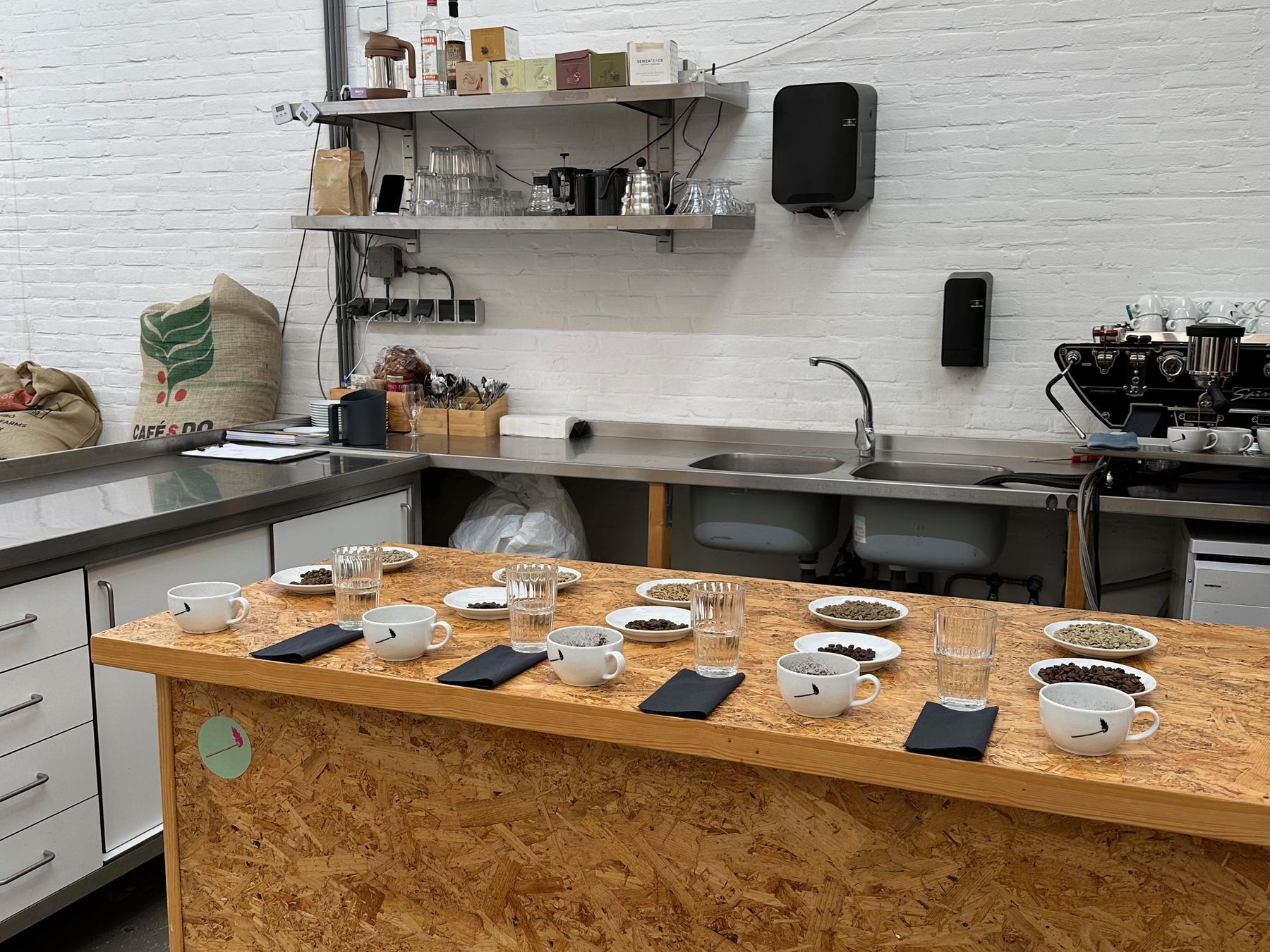Home Barista Training
PermalinkSaturday we participated in a home barista training session at the headquarters of Lucifer Coffee Roasters, here in Eindhoven. That’s also where they roast their beans. I was quite looking forward to it and I’m very glad I joined. It gave us the opportunity to learn more about the world of espresso, and do our first ☕️ cupping.
After moving to our current apartment, we invested in an espresso coffee machine. At the time, I read a few reviews, but didn’t go deep into the rabbit hole. Our choice was mostly driven by the fact that the machine had a very big discount on it, and it wasn’t necessarily a bad choice.
I’ve previously written about both my filter and espresso setup, so it’s probably not coming as a surprise that I’ve been interested in the topic for quite a while. The challenge with espresso, however, is balancing all the settings in order to get a tasty espresso out of the machine.
In the beginning we were getting different beans almost every month, so it was hard to dial into the right settings. So we’ve ended up getting the same beans more frequently in order to be able to have more time to dial in. And yet, there is something that is not always right. But that’s the point: the word always. Sometimes it’s perfect, sometimes it’s disastrous. It’s just not consistent. And I really want it to be consistent.
A few weeks ago I was looking at Lucifer’s website to check their beans and saw they offer home barista courses, and thought: why not? Asked Chris if he was also interested, he said yes, and I registered us. Unfortunately, it ended up being postponed one time due to the lack of interest, but last weekend was it, and it was a total blast!
The training was located at their headquarters where they roast their beans. Apparently they’re also open during the weekdays as an almost regular café. From what I understand, the difference from the HQ and the actual cafés is that they only serve coffee there. The training was in the morning and we were only 4 people, so it was quite 1-on-1.

We started with a cupping session, where we tried different coffee beans that had been processed in different ways: washed, natural, honey, decaf and a darker blend of different coffees. When it comes to hands on experience, we had the opportunity to use an industry grade espresso machine and grinder to make a few drinks.
Some notes:
- Coffee that grows in higher altitudes, such as Colombia, are more fruity, sweeter and acidic. On the other hand, coffee grown at lower altitudes, such as in Ethopia, are usually more earthy, chocolaty and nutty.
- Coffee is processed in different ways: washed, natural and honey. When washed, the outer shell is removed before washing the coffee. Leads to higher acidity and a cleaner flavour. When naturally processed, the beans are dried out in the sun, leading to more fruity and fermented flavours. Honey processing leads to the sweetest flavour profile.
- In places with high humidity, coffee beans are more often washed instead of naturally processed. This is because the high humidity could lead to a fast decay and rot the beans during the process.
- Steaming cow milk is different from steaming plant-based milk. Plant-based milk should not be warmed up as much as cow milk, since it has a different cooking point. Ideally, plant based milk should be around 55°C to 60°C, while cow milk from 60°C to 65°C.
- Ideally, the milk should be steamed up to a temperature where people would be able to consume it immediately. That means below 50°C. But years of experience in the industry show that costumers will likely complain that the coffee is not hot enough. That’s why cafés end up heating it up more.
Overall it was very nice to learn a bit more about coffee from someone that clearly enjoys what they’re doing. Using an industry grade espresso machine was also incredible. The consistency is incredible. Steaming the milk happens almost instantly, while at home we have to wait quite some time for the steam wand to warm up after pulling an espresso - single boiler.
Since we’ve come back home, I’ve been testing how consistent the machine is. Things I can control are consistent I hope: coffee grams, tamping, the coffee itself. But when it comes to the machine, I have limited customization. And I think this is where the problem may be.
Without changing any configuration, I purged a few times and measures the water volume. The values varied wildly. I tried reprogramming it, but it still varying massively. If the water volume from the machine varies wildly, it’s almost impossible to get consistent results. I should further investigate and see if there’s something potentially wrong with the water flow meter.
It was a nice experience, and I have the feeling this is not the last time that I’ll do something coffee-related. I’m sure I didn’t share here all the notes about everything that I learned, but I also hope you enjoyed it.
